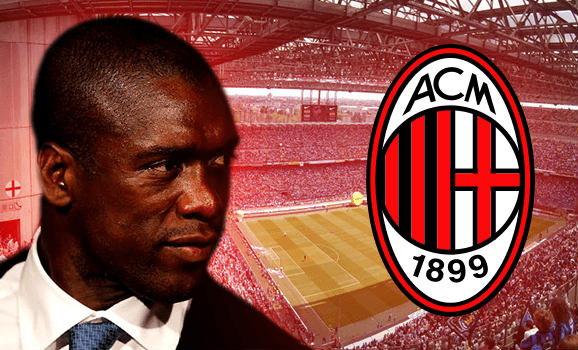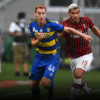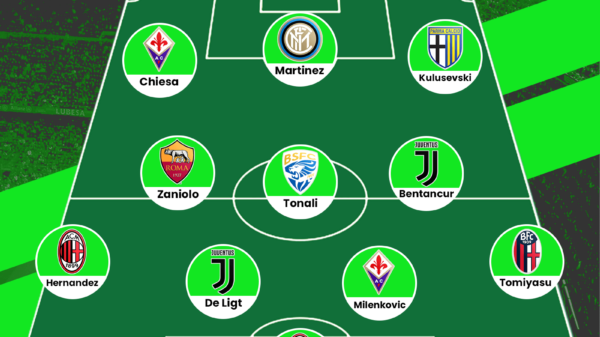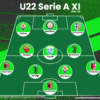Much like Manchester United in England, A.C. Milan have been having a tough time this season in Serie A, with below par performances and baffling tactics leading to the sacking of Massimiliano Allegri after four years in charge of the Italian giants. His replacement, former Milan hero Clarence Seedorf has since seen a dramatic change in form and there’s a new sense of cautious optimism around the San Siro.
The Beginning of the Decline
It has been clear for some time that Milan is in some sort of strange decline. In recent seasons Milan have been selling their best players, which is not the sort of thing you expect from a club that has won numerous Scudetto’s and is one of the most successful clubs in European competitions. The departures of Andrea Pirlo, Zlatan Ibrahimovic, Kevin Prince Boateng, Pierre Emerick Aubameyang, Thiago Silva and Kaka in recent seasons was largely unimpressive to not only Milan’s fans, but football fans around the world who were disappointed to see Milan lose their most exciting players. In particular the exits of Thiago Silva and Zlatan Ibrahimovic to PSG in the summer of 2012 typified this disenchanting transfer period as they left somewhat on the cheap with Milan looking to mount a title race after finishing four points behind Juventus in the 2011/12 season.
However, looking at the financial side of Milan, it becomes clearer as to why Milan have struggled in the the transfer windows. Since 2006 the club have been in debt at the end of every financial year, making it very difficult for the club to spend big and afford to keep players of Ibrahimovic’s stature and corresponding salary, thus when the offers have come in, Milan have had to let these key players leave.
Early Season Woes
Let’s start with how Milan came about the managerial change. The 2012/13 season ended with Milan finishing 3rd in Serie A, 15 points behind the runaway train that was, and still is Juventus. The summer was quiet for the Rossoneri, having already made a £16.4 (reportedly) move for Mario Balotelli in the the January of 2013. Valter Birsa, Andrea Poli, Alessandro Matri and Matías Silvestre (loan) were all bought in the summer of 2013, but the return of Kaka was what Milan fans most appreciated. However, it’s likely that the return of the prodigal son from Real Madrid masked what was a very poor window for Milan. Whilst rivals like Juventus (1st in 2012/13) bought the likes of Carlos Tevez, Fernando Llorente and Angelo Ogbonna, and Napoli (2nd in 2012/13) brought in Dries Mertens, Jose Callejon, Gonzalo Higuain, Raul Albiol and Pepe Reina as well as a new manager in Rafael Benitez, Milan were left with a fairly similar squad as the previous season.
This was no disaster, but as the season wore on it became clear that Milan were not going to be competing for the Scudetto. It was evident that this Milan side were lacking in confidence, and to a certain extent ability. The toll of losing key players in previous seasons and replacing them with fairly mediocre players who realistically are not up to the high standard that the Milan fans expect seemed to suddenly catch up with the team and a string of abhorrent performances defensively and injuries saw Milan placed 13th and four points off relegation after thirteen games.
The Revival
Coming into the January transfer window Milan sat in 13th still, 5 points off the the relegation places and 27 off of table-toppers Juventus. Possibly the only bright spot was their Champions League campaign, which saw them qualify ahead of Ajax with Barcelona, and the prospect of Atletico Madrid in the next round. Still, it was clear that something needed to change, and Allegri was this thing. To his credit, Allegri started Milan’s revival; it was he who brought in Keisuke Honda and Adil Rami whose arrivals have no doubt boosted the team’s confidence and inspired some of their current form, but these deals were not enough to satisfy owner and club president Silvio Berlusconi, and Allegri departed with Milan in 11th win just five wins from nineteen games.
The Milan board took an incredible risk by employing someone new to managing, but at this point in time the risk looks to have payed off. Clarence Seedorf, whilst a Milan hero of the past, was not immediately perceived as someone who could bring the Rossoneri the success that they demand, but football fans worldwide have had to sit up and take notice of Milan’s much better performances in 2014. Seedorf was given a small window in January to try and make his mark on the Milan squad, and did so by the surprise loan acquisition of Adel Taarabt. From the subs bench at Fulham to the starting XI at one of the most prestigious clubs in Europe seems like a strange move, but it is a mark of Seedorf’s managerial abilities that Taarabt has fitted like a glove to Italian football and has established himself already as a fans favourite. 2 goals in his opening 4 games in Serie A including a great solo goal on his debut against Napoli.
Tactically we can see where Seedorf is implementing his ideas. For a manager who has no previous managerial experience, the Dutchman has shown a very impressive tactical knowledge. Milan have noticeably been one of the Italian sides which has opted to play the standard 4 in defence rather than 3 centre backs and 2 wing backs in recent years, and under Seedorf’s regime they have continued in this vein. Milan have been operating in a very European 4-2-3-1 style under Seedorf, with a strict back four, where the full-backs have been allowed to express themselves and join the attack, two defensive midfielders sit in front of the centre backs, then three creative players with license to roam and finally a lone striker. This style allows Milan to counter teams that tend to play with a flat three in midfield as they have to drop midfielders back to cover, meaning they lack players going forward. Also, Milan’s creative players such as Taarabt, Kaka, Honda, Robinho and Poli have thrived in this system. Similarly to Chelsea, the positions of the attacking three have been somewhat ambiguous which has caused teams a lot of problems, as the movement and irregularities of these players positions seems to have caused defences problems, and Adel Taarabt in particular has shone in his free role, popping up on the left, right and even in a striker role from time to time, and defences just don’t know who to mark.
Obviously, as with any tactic, there are issues. The creative types sometimes fail to provide width, and often the lone striker is marked out of the game by three centre backs, but these issues as less noticeable than Milan’s much improved performances.
One other noticeable thing is the team spirit and bond that the players have with their manager. Maybe it’s because Kaka actually played with Seedorf for some time, or perhaps it’s the relatively small age gap in comparison to other managers, but the squad just seems to be more of a team, which is surprising considering the number of individual talents that they have that like to be the focal point of the team. This is another mark of the ‘Seedorf Effect’, and was shown clearly in Milan’s game against Verona, as Balotelli, after his goal against the team who were 5 places above them, exchanged a heartwarming moment with Seedorf.
Balotelli and Seedorf showing their respect and friendship
So what next for Milan? Their recent loss to Juventus of 0-2 doesn’t begin to tell the tale of the match, and many positives can be taken by Milan, who admirably took the game to Juventus who looked shaken for most of the game. The form table puts them in 5th and before the loss to Juventus they were 3rd, however in league terms Milan now sit in tenth, but are only 6 points behind 5th place Inter and 5 behind 6th place Verona. This means depending on how the domestic cup competition goes Milan could still qualify for the Europa League. The Europa League isn’t always seen as the most attractive competition, but does mean that players are drawn to European football and TV revenue etc can be earned. Not qualifying wouldn’t be a disaster for Milan, and is quite unlikely, but they still need to hold on to key players like Balotelli, Montolivo and maybe secure Adel Taarabt permanently. If they do so, Milan will have a better season next term, and can expect brighter things in the future.
This was a guest piece by Luke Bosher. You can follow him on twitter @bosherL
What do you think is the issue with Milan’s fall? Can it be ‘checked’?





























































